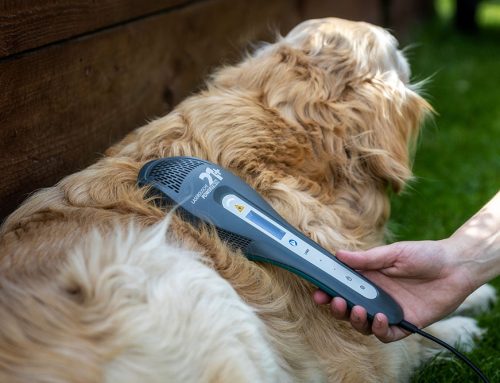Ensuring a Happy and Comfortable Life for Your Pet
As pet owners, we cherish the love and companionship our animals bring into our lives. But as pets age or face serious health conditions, evaluating their quality of life becomes an essential responsibility. Understanding when a pet is thriving versus when they may be struggling is key to making compassionate, informed decisions about their care.
At Pinedale Animal Hospital in Pinedale, Wyoming, we are dedicated to helping pet owners navigate these critical moments. Whether through preventative care, pain management, or end-of-life support, our veterinary team provides expert guidance to ensure your pet’s well-being.
Essential Quality of Life Metrics for Pets
Assessing a pet’s well-being involves both physical and emotional factors. Veterinary professionals often use quality of life scales to measure comfort levels, but pet owners can also monitor key indicators at home.
1. Physical Health Indicators
- Mobility & Pain Management – Difficulty standing, reluctance to move, or limping may indicate arthritis, nerve issues, or joint pain. Anti-inflammatory medications, physical therapy, and home modifications can help improve mobility.
- Vital Signs – A dog’s heart rate typically ranges from 60 to 140 beats per minute, while cats generally have a heart rate of 140 to 220 BPM. Deviations could suggest heart disease, infections, or respiratory problems.
- Weight & Muscle Condition – Unexplained weight loss, muscle wasting, or difficulty eating could indicate underlying illness such as cancer or organ disease.
2. Behavioral Changes and Emotional Well-Being
Pets may not verbally express pain, but behavioral shifts can signal distress:
- Increased Irritability or Withdrawal – If your pet suddenly avoids interaction or seems unusually grumpy, they may be experiencing discomfort.
- Changes in Sleep Patterns – Restlessness, pacing, or excessive sleeping can indicate chronic pain or cognitive decline.
- Lack of Interest in Favorite Activities – A once playful dog ignoring their toys or a cat refusing affection may be silently suffering.
For structured methods to assess behavioral and emotional well-being in senior pets, check out AAHA’s Quality of Life Assessment Tools.
3. Hydration & Nutrition: Are They Eating and Drinking Enough?
Proper hydration and nutrition are essential for energy levels, immune function, and healing. Signs of nutritional issues include:
- Sudden appetite loss – May signal dental disease, nausea, or metabolic conditions like diabetes.
- Excessive thirst – Can indicate kidney disease, hormonal imbalances, or infections.
- Poor coat quality & pale gums – Often linked to malnutrition, anemia, or vitamin deficiencies.
When to Seek Help: If your pet is refusing food for more than 24 hours, contact Pinedale Animal Hospital for an evaluation.
Home Monitoring: How to Track Your Pet’s Health
Pet owners play a vital role in day-to-day health assessments. These simple strategies can help identify changes early:
- Keep a Journal – Track eating habits, mobility, mood, and bathroom behaviors.
- Use Pet Health Apps – Digital logs can help monitor patterns over time.
- Check for Incontinence Issues – Accidents in the house may indicate bladder infections, nerve issues, or aging-related changes.
If incontinence becomes a concern, strategies like absorbent pads, scheduled potty breaks, and medication can help improve comfort.
When is Veterinary Intervention Necessary?
Regular Check-Ups: The Best Preventative Care
Routine vet visits help detect health concerns before they become serious. At Pinedale Animal Hospital, we offer:
- Comprehensive physical exams to assess pain levels and body condition.
- Blood tests, X-rays, and ultrasounds to diagnose internal conditions.
- Palliative and hospice care for pets with chronic illnesses.
When to Seek Immediate Help:
If your pet experiences:
- Severe lethargy or unresponsiveness
- Persistent vomiting or diarrhea
- Labored breathing or difficulty standing
Don’t wait—contact us today to ensure your pet gets the medical support they need.
Emotional Considerations: Coping with Quality of Life Decisions
Deciding how to handle a pet’s declining health is emotionally challenging, especially when considering palliative care or euthanasia.
Supporting Your Family Through the Process
- Helping Children Cope – Young family members may need guidance when saying goodbye. Colorado State University’s Pet Loss Guide offers helpful strategies.
- Recognizing When It’s Time – Quality of life assessments can help determine when a pet’s suffering outweighs their comfort. Compassionate euthanasia can provide a peaceful transition when a pet’s pain becomes unmanageable.
- End-of-Life Resources – The AVMA’s End-of-Life Care Guide offers compassionate advice for making difficult decisions.
At Pinedale Animal Hospital, we understand that these choices are deeply personal. We are here to support you with empathy and expertise every step of the way.

FAQs: Understanding Your Pet’s Quality of Life
Q: How do I know if my pet is in pain?
Watch for signs like limping, reluctance to move, excessive licking of a specific area, or sudden aggression. If in doubt, schedule a veterinary evaluation.
Q: My pet stopped eating. What should I do?
Loss of appetite can signal illness, pain, or nausea. If your pet refuses food for more than 24 hours, seek veterinary advice.
Q: How often should my pet have a senior health check?
For senior pets, twice-yearly check-ups are recommended to detect health issues early.
Q: What are the signs that my pet’s quality of life is declining?
Chronic pain, lack of mobility, significant weight loss, incontinence, or inability to engage in favorite activities may indicate declining quality of life.
Compassionate Care at Pinedale Animal Hospital
At Pinedale Animal Hospital, we are committed to providing compassionate, expert care to help pet owners navigate difficult decisions. Whether your pet needs pain management, mobility support, or end-of-life guidance, we are here to assist.
By staying informed and proactive, you can ensure your pet enjoys a comfortable, happy life—at every stage.








Leave A Comment